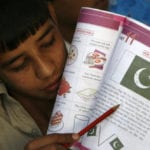 Mysteries
Mysteries  Mysteries
Mysteries  History
History 10 Surprising Stories About the Texas Rangers
 Humans
Humans 10 Philosophers Who Were Driven Mad by Their Own Theories
 Miscellaneous
Miscellaneous 10 Video-Game-Worthy Weapons and Armors from History
 Weird Stuff
Weird Stuff 10 Psychics Who Accurately Predicted Wartime Events
 The Arts
The Arts 10 Pieces of Art Inspired by a Broken Heart
 Health
Health 10 Science Fiction-Sounding New Medical Treatments
 History
History 10 Surprising Facts About the Father of Submarine Warfare
 Space
Space Ten Astonishing New Insights into Alien Worlds
 Weird Stuff
Weird Stuff 10 Bizarre Summer Solstice Rituals Still Practiced Today
 Mysteries
Mysteries Top 10 Haunting Facts About the Ghost Ship MV Alta
 History
History 10 Surprising Stories About the Texas Rangers
 Humans
Humans 10 Philosophers Who Were Driven Mad by Their Own Theories
Who's Behind Listverse?

Jamie Frater
Head Editor
Jamie founded Listverse due to an insatiable desire to share fascinating, obscure, and bizarre facts. He has been a guest speaker on numerous national radio and television stations and is a five time published author.
More About Us Miscellaneous
Miscellaneous 10 Video-Game-Worthy Weapons and Armors from History
 Weird Stuff
Weird Stuff 10 Psychics Who Accurately Predicted Wartime Events
 The Arts
The Arts 10 Pieces of Art Inspired by a Broken Heart
 Health
Health 10 Science Fiction-Sounding New Medical Treatments
 History
History 10 Surprising Facts About the Father of Submarine Warfare
 Space
Space Ten Astonishing New Insights into Alien Worlds
 Weird Stuff
Weird Stuff 10 Bizarre Summer Solstice Rituals Still Practiced Today
Top 10 Worst Times To Be Alive In History
Human history has been quite violent. From devastating pandemics to consistent war, our ancestors saw more action in a single week than most of us will see in our lifetimes.
SEE ALSO: 10 History Myths Still Taught As Fact
Even if we have the numbers, it’s still difficult to imagine exactly how violent some of our history has been. Our most tumultuous times are now only remembered as statistics, even if they were a living nightmare for anyone unlucky enough to be there. If you were a civilian just minding your own business, these are the worst times in history you could find yourselves in.
10 16th And 17th Century: Catholic Persecution In Britain

Britain has been trying to rebrand its historical image with tea and monocles, though it’s hard to do given how violent its history has been. We’re not even talking about the colonies here. A civilian in old Britain may die in a variety of ways depending on the time period. The worst, however, would probably have to be during the Catholic rebellion and their eventual persecution.
It was generally a time of upheaval in Europe, largely over the question of which kind of Christianity is the best one. The situation was especially bad in England, as the ruling Protestants really did not like the Catholic population.
If you were suspected of being a Catholic or harboring one, there were a number of creatively horrifying ways you could die. One woman was slowly and publicly crushed to death simply for refusing to talk when she was questioned for supporting the Catholics. You could be drawn and quartered, hung, or just lynched by a mob. The mob thing was rare, as the central authorities made sure to intervene and kill you themselves before the situation got so out of hands.[1]
9 1992 – 1996: The Siege Of Sarajevo
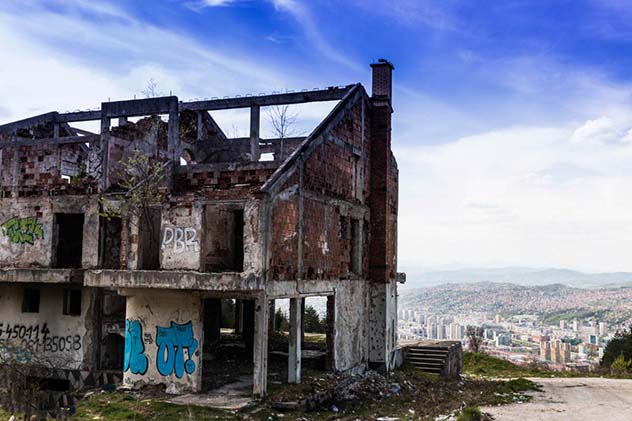
Sieges are an overall bad time to be in, and we highly recommend not being in one if it could be helped. Some of the most prolonged sieges in history – like the Siege of Leningrad – have been huge humanitarian disasters, too, as sieges primarily affect the citizens.
One particularly horrifying siege that isn’t mentioned that often is the Siege of Sarajevo by the Serbs, which is also the longest siege of a capital city in modern history. It went on for almost four years, and close to 14 thousand people ended up dying.
If the incessant shelling on primarily civilian areas (like the market) didn’t get you, you could die in many other ways. People were dying just from the harsh cold – as there were no fuel supplies in many parts of the city. Quite a few of them had to move into shared spaces with other families without any amenities, turning an otherwise functioning city into a giant refugee camp. Many people were killed by the snipers, who deliberately targeted kids.[2]
8 1918 – 1919: The Spanish Flu
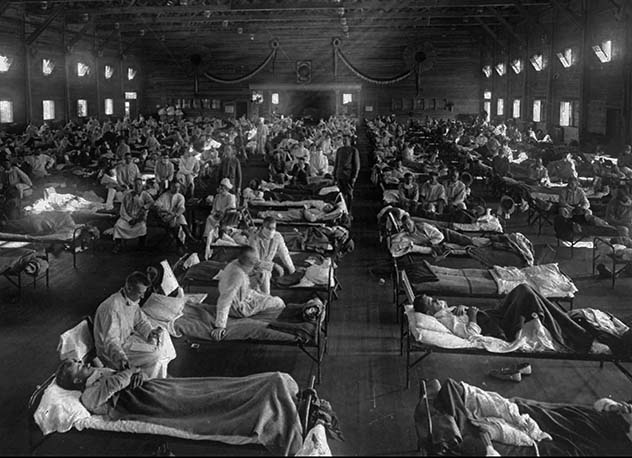
There were so many things going on around 1918 that it’s difficult to say which one was the most horrifying. From widespread rebellions around the world to the First World War to revolutions across Asia and Europe, it was a pretty bad time to be alive in general.
What’s not mentioned in the same tone, however, is the Spanish Flu, even if it was by far the most devastating event among everything happening around the time – at least in terms of death count. At its peak, it infected around one-third of the entire human population, and total casualties are somewhere in the ballpark of 20 million to 50 million.
All of those may just sound like numbers, though imagine the odds of your body not slowly rotting off being as low as 1 in 3. It was a public health nightmare around the world, and anyone alive back then would have seen bodies lying around the street like it’s nothing. That’s if they were lucky enough to not have been infected themselves. The virus acted so fast that in many cases, victims would die within a few hours of getting infected. Making matters worse was rudimentary medical technology of the time, as most of the times, doctors simply had no idea what to give their patients.[3]
7 1983 – 2009: Sri Lankan Civil War
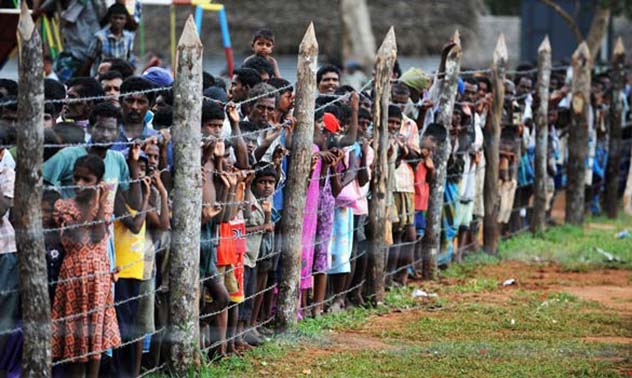
As far as civil wars go, we’ve had quite a few. While we’ve enjoyed some of them – like the American one – we’re not fans of some of the others – like the Spanish one. Regardless, civil wars have played a crucial role in shaping up the modern world.
While civil war is not the best time for civilians anywhere, one of them was especially bad for the bystanders. The Sri Lankan Civil War was fought by the Sri Lankan Government and Tamil rebels, and was especially devastating for its civilians. A major problem fueling the conflict was sectarianism, as the majority-Sinhalese government forces were regularly committing atrocities on the Tamil population.
The most horrifying part of the war was around its end, when tens of thousands of civilians were sandwiched between approaching government forces and rebels (who had been using them as a buffer). Many civilians were massacred in the oncoming artillery barrage, though only if they weren’t already killed in the earlier military-aided pogroms across the country. It remains a forgotten-yet-brutal part of Sri Lanka’s history (if ten years ago could be called ‘history’), and has even been called a genocide by many.[4]
6 17th Century: The Thirty Years’ War
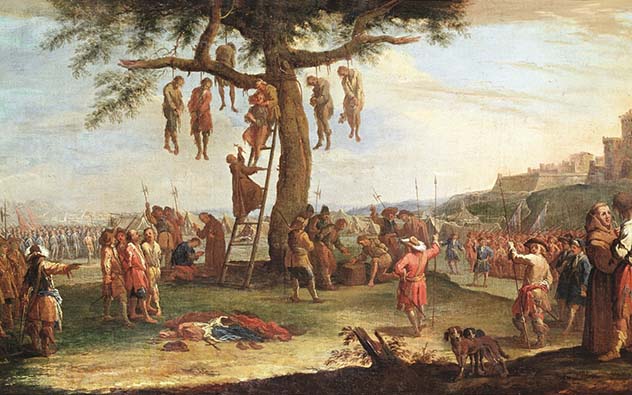
War has been a part of European history for a long time, though few of those were as devastating for the people of Europe as the Thirty Years’ War. If we consider the proportion of the casualties to Europe’s total population, it was far deadlier than events like the Black Plague or the Second World War. Around eight million people were killed, making it one of the most lethal events in history.
It was the focal point of the larger Catholics vs Protestant conflict in Europe at the time, and absolutely devastated the countryside throughout Europe. Almost all of the big powers were involved, making the conflict widespread. The war was accompanied by a severe famine and disease outbreaks, as well as regular pillaging and looting of small villages by mercenary army units. It doesn’t get as much credit as more popular recent catastrophes in Europe, though anyone who was alive and in Europe at the time during the Thirty years’ War would have seen some things for sure.[5]
5 1942: Firebombing Raids During WW2
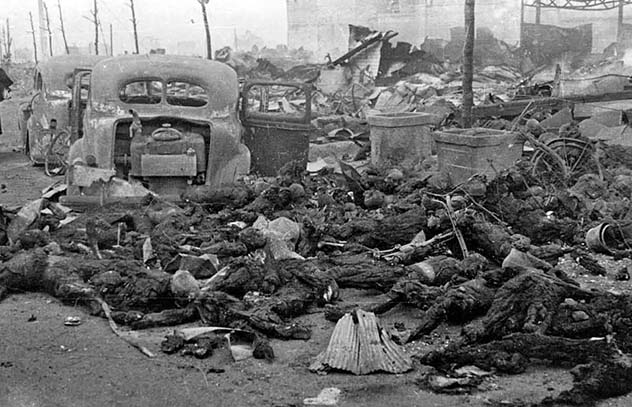
Being anywhere in the world during the Second World War would be a bad time for most people, though that was especially true for the countries that lost. The main areas of both Germany and Japan were levelled to the ground, mostly to send a message than any real military objective.
While it’s the nukes that get the most coverage, the firebombing raids of Tokyo are still known as the bloodiest bombing raid in military history, and possibly killed many more than both the nukes combined. Military-grade incendiary material—like napalm and petroleum jelly—was indiscriminately used on civilian areas (especially civilian areas, actually). For anyone living in Tokyo (or Dresden to a lesser extent), it would have been a scene right out of a horror movie. Charred remains of people on the streets, wooden houses set on fire in every direction, and the sound of bombers continuously prowling the air. As many as 100,000 civilians were burnt to death in just one night of bombing, with over a million maimed.[6]
4 1947: The Partition Of India
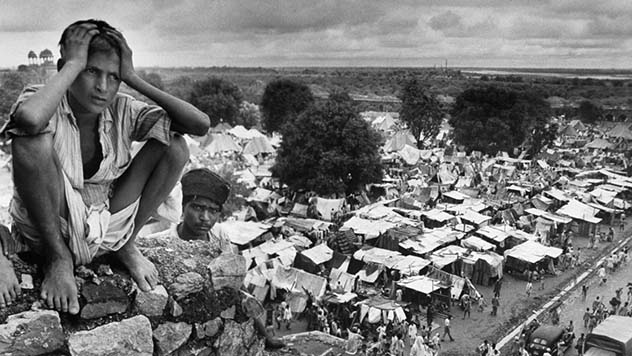
As most of us have realized by now, the British Empire had a partition problem. Many modern world issues exist because the Brits decided to have fun with their borders before leaving their colonies, making things even more complicated for the independent countries.
Nowhere is that more visible than in the partition of India into the countries of India and Pakistan on religious lines. Overnight, millions of people embarked on one of the biggest and most perilous mass migrations in history. That is, of course, if they could leave at all.
Many of the Muslims in India, and conversely Hindus and Sikhs in Pakistan, weren’t that lucky. Around 1 million died in the ensuing riots that included horrors like literal trains full of dead bodies. They were one of the bloodiest riots in history, and true numbers of the casualties would probably never be known due to lack of records.[7]
3 Being A Miner In Ancient Rome
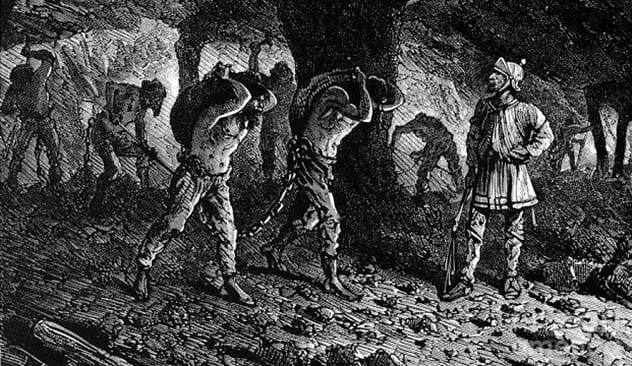
Everyone knows that slavery was big during Roman times. Slave labor made the empire possible, as building all those aqueducts and other advanced architecture across a vast territory isn’t easy. Slavery took a lot of diverse forms in the ancient Roman Republic according to what they did, and slaves were mostly taken from conquered territories.
If you’re looking for having the worst time of your life in Roman times, you could opt for being a slave in the mines. Reserved for the slaves the Romans particularly hated, it was just about the worst thing that could happen to you. The working conditions were horrible, and whoever was sent to the mines was expected to die there. There was rampant disease and deaths due to the harsh conditions, as mining wasn’t the most developed technology back then. Mind you, this is not an exclusive punishment. You could also be mutilated and beaten for no reason, too, or just thrown into a pit with a wild animal. Anything goes in the mines, and all you needed to find yourself in there was simply existing anywhere around the Roman empire.[8]
2 1467 – 1600: The Sengoku Period
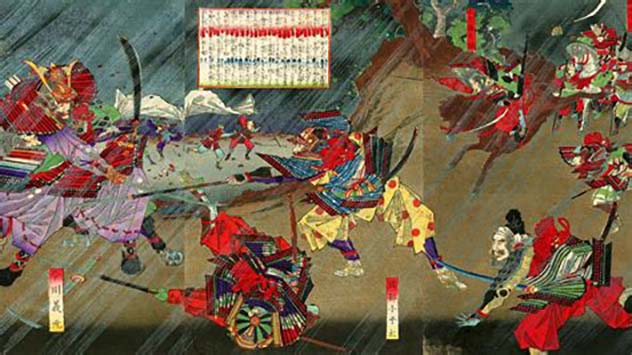
The Sengoku Period – lasting over a hundred years—was one of the most defining parts of Japanese history, as well as one of the most influential. A lot of historical Japanese pop culture is set in that period, as it was a time of consistent war and rapidly-shifting political climate. There were more warlords fighting for territory than you could count, as the central power of the Shogun had weakened in recent times.
For someone living in that period, war and suffering would have been a part of daily life. Apart from opposing factions regularly raiding villages and towns for supplies, civilians were often caught between battles they had nothing to do with. Of course, that wasn’t the case in every village across Japan, as many of them thrived due to the shifting landscape, too. For those caught between the battles or the just lost in vast swathes of ungoverned Japanese terrain, though, it was a dangerous time to be in. The period was noteworthy for its brutality and general disregard for human life, and gave way to some of the most fearsome samurai warriors in Japanese history.[9]
1 The Year 536
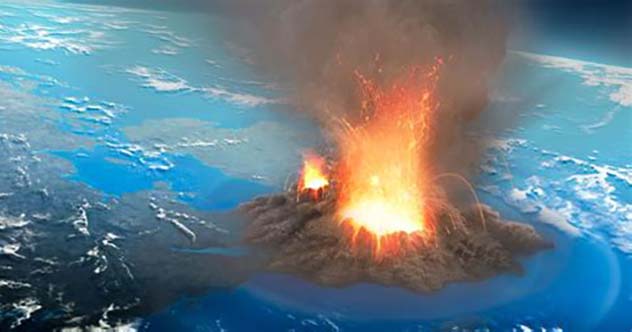
When us laymen talk about the worst times in history, we’re thinking of stuff like violence and proximity to cannibalism. We don’t have any scientific parameters to measure how bad a time is for the people living in it, though we can make educated guesses.
When it comes to scientists, though, they don’t bother with guesses or estimates, and have calculated the exact year it was the worst time to be alive in history; the year 536.
Apart from the falling empires the world over and general political chaos, the year 536 also marked one of the worst global famines in human history. The famine was due to ash in the air blocking the sunlight, which isn’t surprising as there were also quite a few humongous volcanic eruptions around that time for good measure. The ‘foggy eclipse of the Sun’, as it was described then, was visible everywhere in the world, giving the whole thing an even creepier vibe. Combine that with brutal conflicts in many places around the world, and you know why the researchers chose the year 536 to be the absolute worst one in history.[10]
For more lists just like this, check out 10 Times Governments Edited Textbooks To Rewrite History, and 10 People From History Who Just Refused To Die.
About The Author: You can check out Himanshu’s stuff at Cracked (www.cracked.com/members/RudeRidingRomeo/) and Screen Rant (https://screenrant.com/author/hshar/), or get in touch with him for writing gigs ([email protected]).


